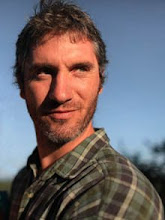I was recently in France for the opening of my exhibition on Nauru. 46 images and 2 videos are exhibited outdoor at the Festival Photo de Mer, from April 8th until May 8th. Other exhibitions includes stories from Ed Kashi and Chris Maluszynski.
Thanks to a grant from the Festival Photo de Mer, I spent 11 days on Nauru, the world's smallest Republic, far off in the middle of the Pacific. To turn it into a "real" story I teamed up with Geo Magazine (the German edition) staff-writer Markus Wolff. Story will soon come out in Germany.
Nauru has long been on my mind. I first heard about it in late 2001, when Afghan refugees were held in a detention center on the island. I couldn't put these 2 facts together in my head. After some research, they were so many curiously fascinating facts about the island that I just needed to go. It seemed a unique case of middle of nowhere yet middle of everything.
Here is a translation of my synopsis that got me the grant (© Matthieu Paley) :
"Nauru, an island of barely 21 km2, is located in the middle of the Pacific. It is the world’s smallest republic.
Its soil, extremely rich in phosphate, has been exploited since the beginning of the 20th century. The rapid value increase of the phosphate, followed by independence, makes Nauru the richest country in the world at the beginning of the 70’s.
As a result, falling for the temptations of uncontrolled consumerism, the Nauruans considerably change their way of life. Diabetes and the highest obesity level on the planet are some side effects of these excessive years.
End of the 90’s: the Phosphate resources diminish considerably.
Looking for financial solutions, Nauru becomes a tax-free zone, and with this a facilitator for money laundering businesses of the Russian mafia. The government also opens a detention center for Afghan and Iraqi refugees, all paid for by the Australian government...
In 2004, the state goes bankrupt. The government of Nauru decides at last to reactivate its phosphate mining. Official sources estimate that there are between 20 and 30 years left for further exploitation. The Nauruans, an isolated people, continues to look for solutions, keeping all the while their joyful island spirit.
We go to meet these men and women of Nauru, their president, a former weightlifting champion; Gerard Jones, a personal trainer and bird hunter; Lucia, the oldest lady of the country and Scarlet Lucy, the cargo ship that brings goods to the island every 2 months."
Two preview shots, the full story will soon be up on my website.
Lucia dances in her living room “I dance a lot, I pray to the Lord and I play Bingo!”. 85 years old, she is the oldest woman of the country, and the last person to have known deportation, in 1943, during the Second World War. 1200 Nauruans were then sent on the Chuuk island by the Japanese forces, and endured forced labor. Only 737 came back in 1945.
It takes 6 hours flight from Bisbane in Australia to reach Nauru, an island state of barely 21 km2, located in the middle of the Pacific, 42 km from the equator. It is the world’s smallest republic, with less than 10.000 inhabitants. Twenty minutes of driving (19 km) will bring you around the whole country…





No comments:
Post a Comment